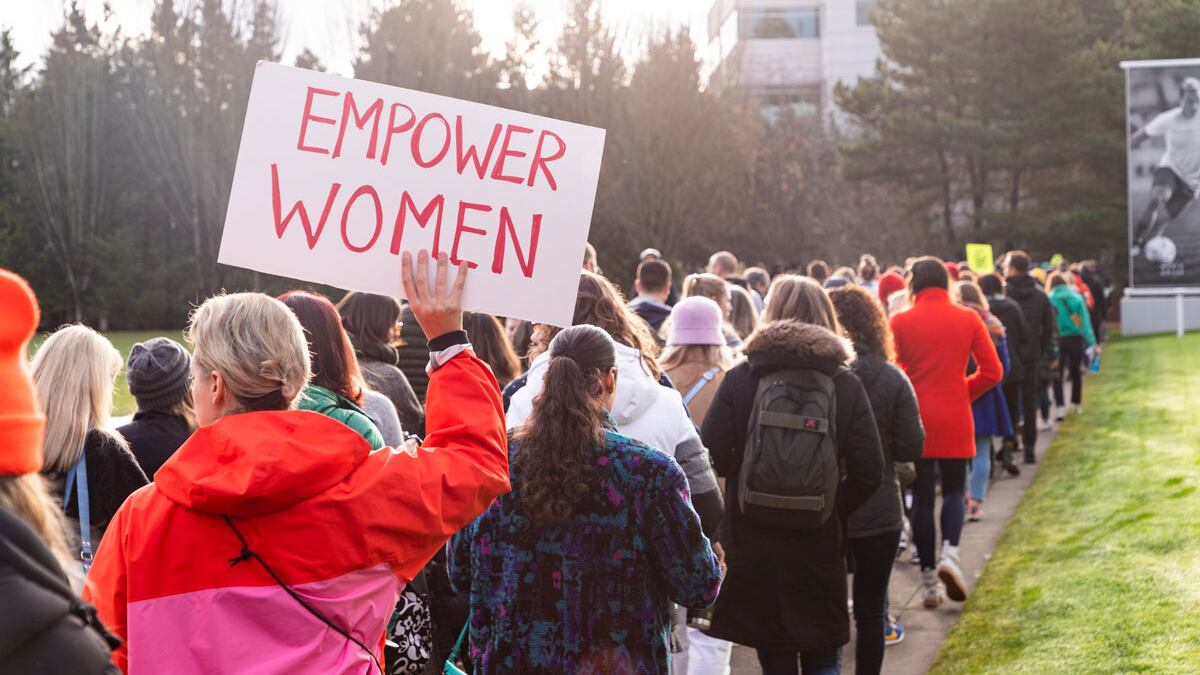Protests are an everyday sight in Portland. Not at Nike.
Oregon's largest company built its brand on rebellion. But it had never seen its own employees picket their bosses on its lush Beaverton campus.
That is, until this week.
As Nike prepared to reopen a renovated building named after embattled track coach Alberto Salazar, at least 400 employees staged a protest Dec. 9 of the company's treatment of women.
The picket was quiet and orderly. Employees marched around Lake Nike, carrying signs and chanting, albeit briefly. One sign read, "Just Do Better." Another said: "Doesn't the Simone Biles building sound better?"

For years, Nike employees have handled their grievances internally, or kept silent, even as outside criticism of the company mounted ("Don't Worry, Be Nike," WW, Nov. 20, 2019). What changed? The company reopened the Alberto Salazar Building, an office at Nike World Headquarters named after the Nike Oregon Project running coach.
This fall, several athletes—including Mary Cain and Amy Yoder Begley—accused Salazar of berating, humiliating and body-shaming them. (Salazar has also been banned for four years by the U.S. Anti-Doping Agency. Nike is investigating the athletes' allegations, and contests the doping ban.)
Yet Nike didn't rename the office, even as it remodeled it this fall. The interior of the newly renovated building, as described by two Nike employees, is plastered with images of Salazar.

Soon after WW approached protesters, a woman handed out two fliers. One of them read, "No employee is permitted to speak with the news media on any Nike-related matter, either on or off the record, without prior approval from Nike Global Communications."
Nike spokesman Greg Rossiter told WW in a statement that "the flier prepared by some employees was not officially distributed by Nike." He added: "We respect and welcome employees' feedback on matters that are important to them."
The two employees, speaking on condition of anonymity, didn't feel that way. They told WW in hushed tones that upper management had caught wind of the protest the day before and tried to "water it down." They alleged Nike executives warned employees not to stop the protest at the Alberto Salazar Building, but to walk on by.
"I know we present as a monolith face, but a lot of us are critical thinkers," said one of the two employees. "We want to do something. But what do we do to fight against this greater culture?"
When WW showed the flier warning against media engagement, an employee grabbed it and called it a "perfect example" of how Nike keeps its workers quiet.

Kara Goucher, a former Oregon Project runner, thanked Nike employees on social media. "Very encouraged that Nike employees had a peaceful protest," she wrote. "Thank you, you are the change!"
Cain, the runner whose allegations started the internal reckoning, noted the protest on Twitter. "If Nike wants to do the right thing," she wrote, "they must allow a third party to run their investigation. Let their employees and community talk freely. Stop the intimidation. It's scary to read this article and feel that old 'berm mindset'"—referring to the earthen barrier that surrounds Nike's campus.
During the march, WW's photographer was escorted off campus by a Nike official. But he took these photos first.






